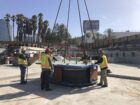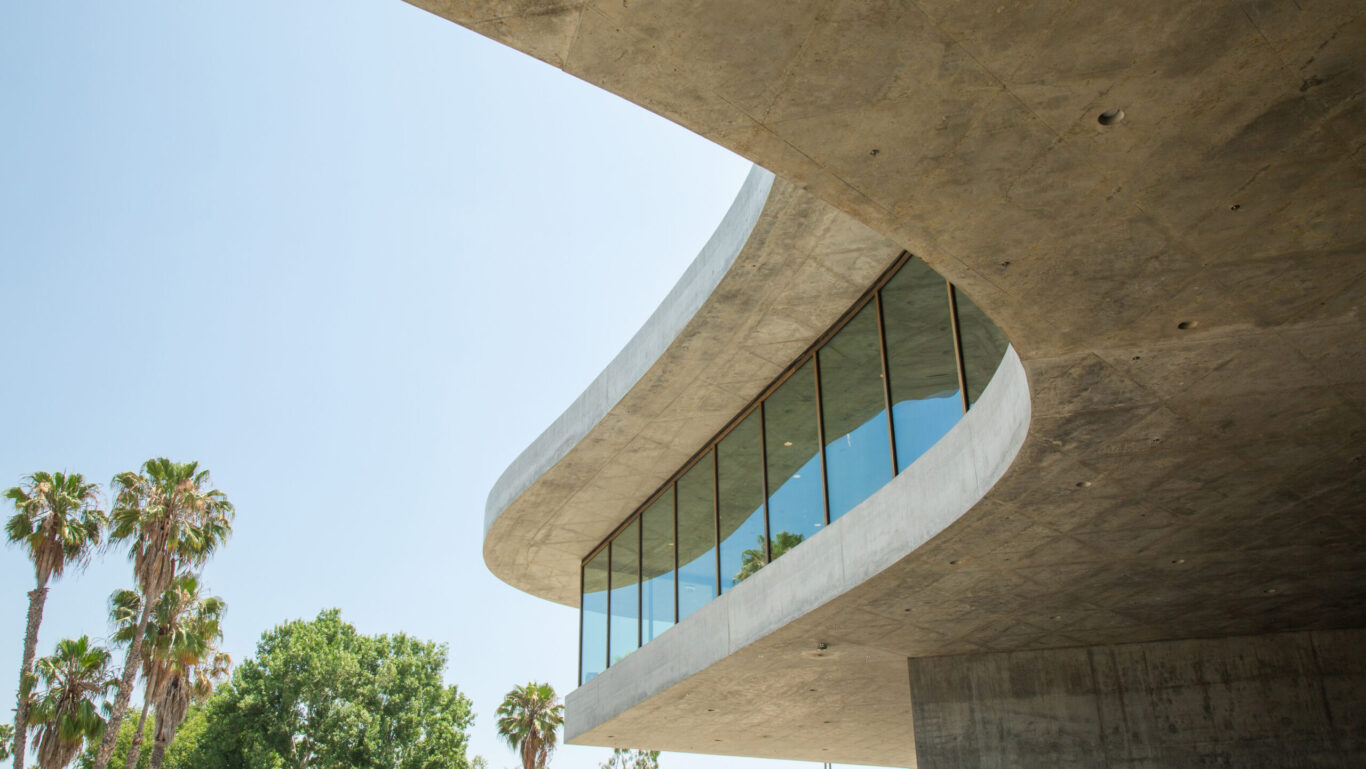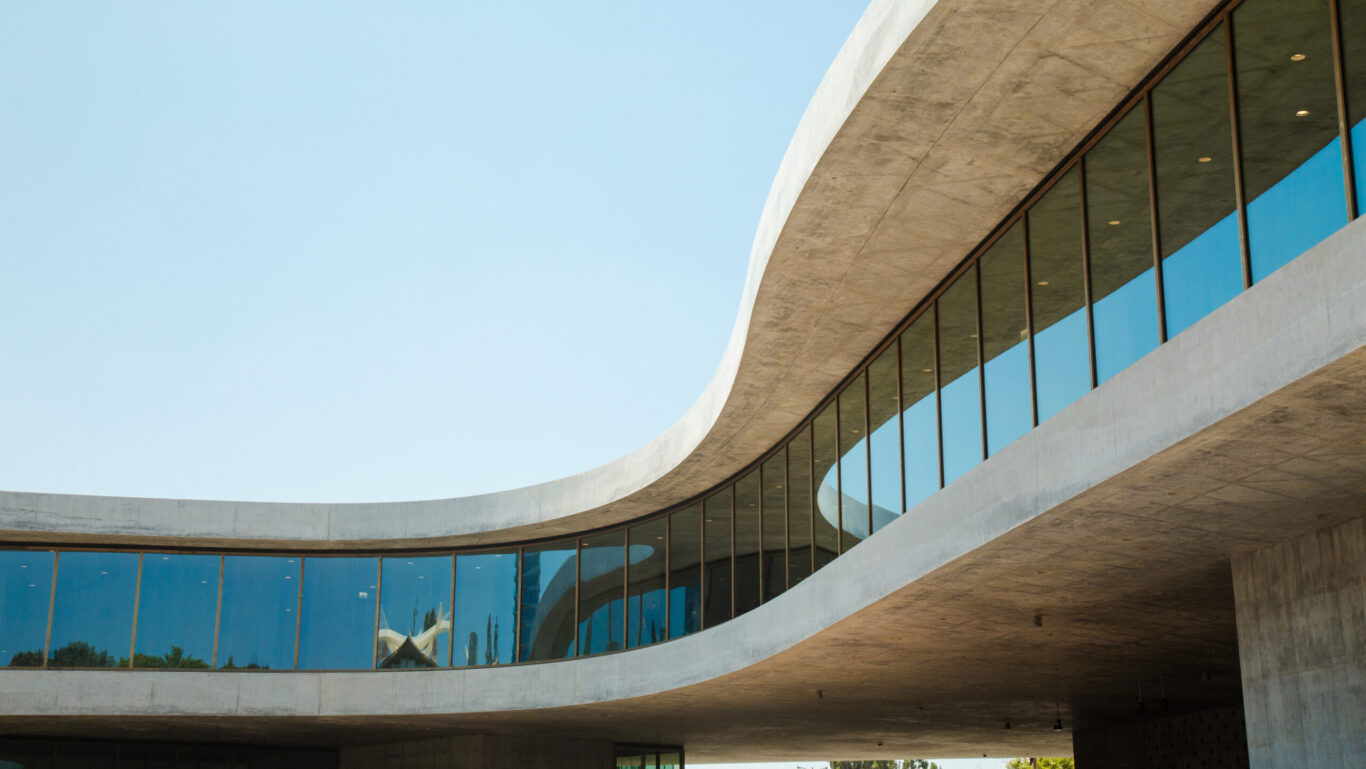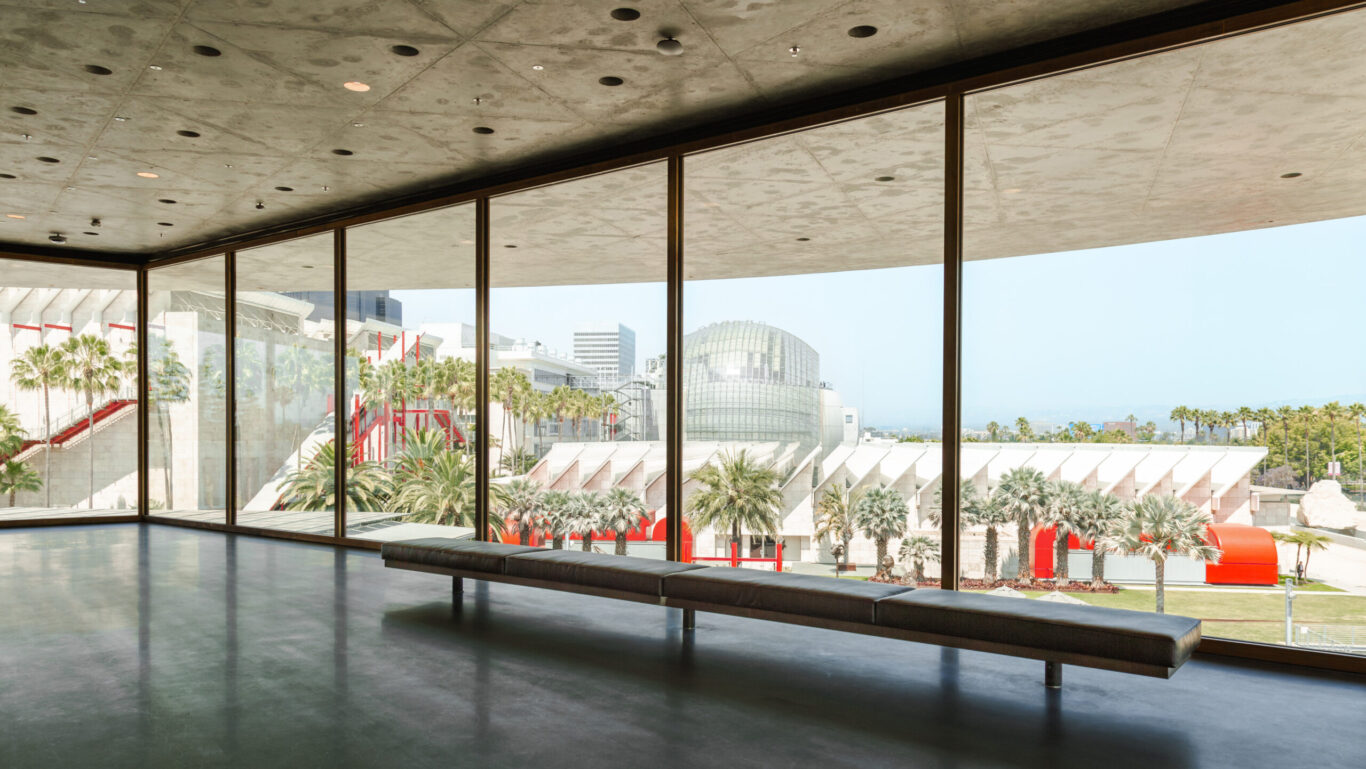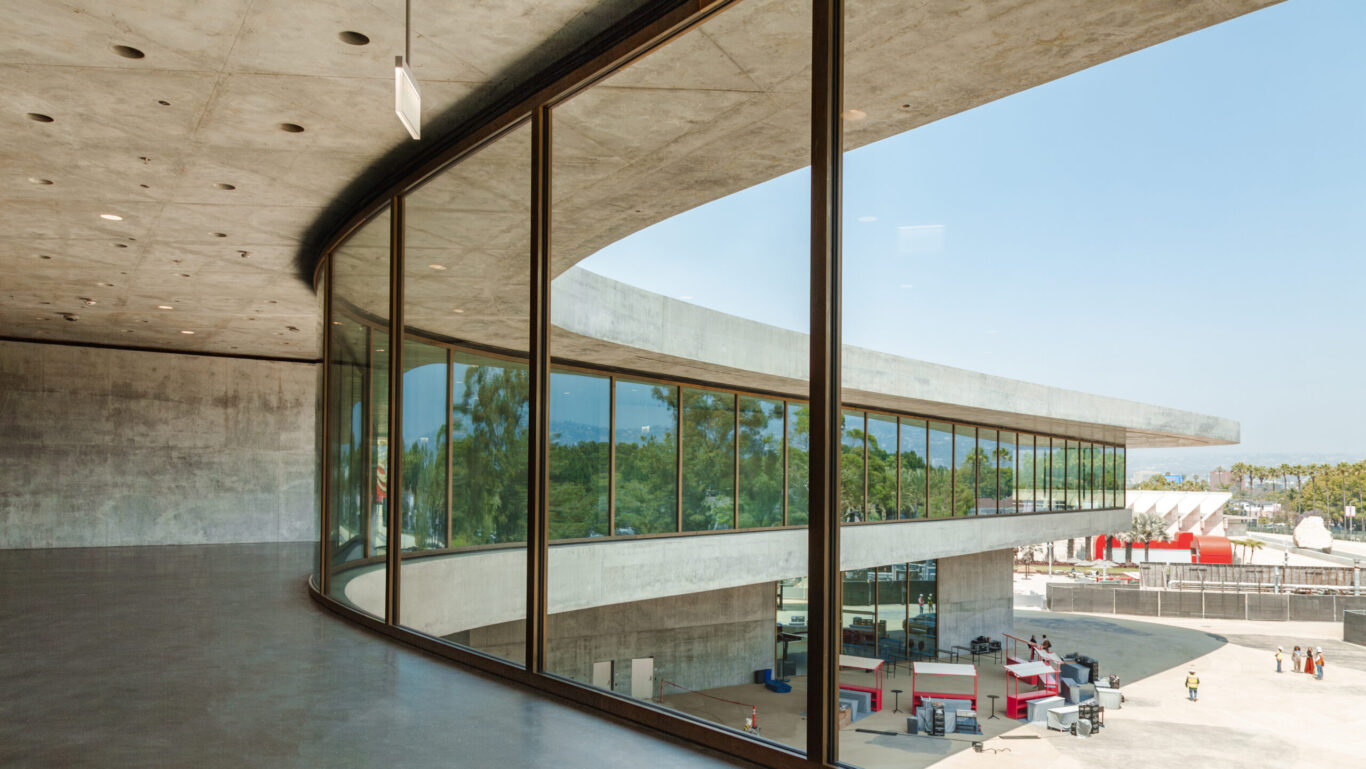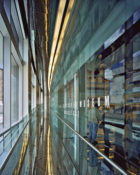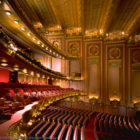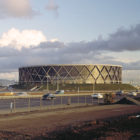Architecture that reflects a museum’s evolution
The David Geffen Galleries is LACMA’s new home for its permanent collection. Designed by architect Peter Zumthor in collaboration with SOM, the newest building in LACMA’s campus will showcase works from the museum’s vast collection, reflecting the breadth of the largest encyclopedic art institution in the western United States. To achieve Zumthor’s ambitious design—a sweeping concrete structure that extends across the existing campus and floats over Wilshire Boulevard—the museum engaged SOM to collaborate as architect of record and structural engineer.

Replacing four aging buildings, the design places all of the artwork on a single, open gallery level, inviting visitors to experience a continuous exhibition, elevated 30 feet in the air. The design of the galleries supports a new curatorial direction at LACMA by creating opportunities to make connections between artifacts from varied disciplines, time periods, and geographies. The gallery level is wrapped in an expansive glass facade that frames panoramic views of Los Angeles—putting the city on display as a backdrop to the museum experience. A series of concrete-enclosed galleries are carefully arranged to create havens for light-sensitive artwork.

Architectural concrete is both the primary structure and the finished surface, giving the building a sculptural presence. Defined by its dynamic contours and dramatic cantilevers, the 900-foot-long building is constructed as a continuous concrete slab with no joints. Seven glass-enclosed pavilions at street level support the exhibition floor and house visitor services, retail, education spaces, and a theater. A new landscaped plaza and sculpture garden connect the new building to the public realm.



